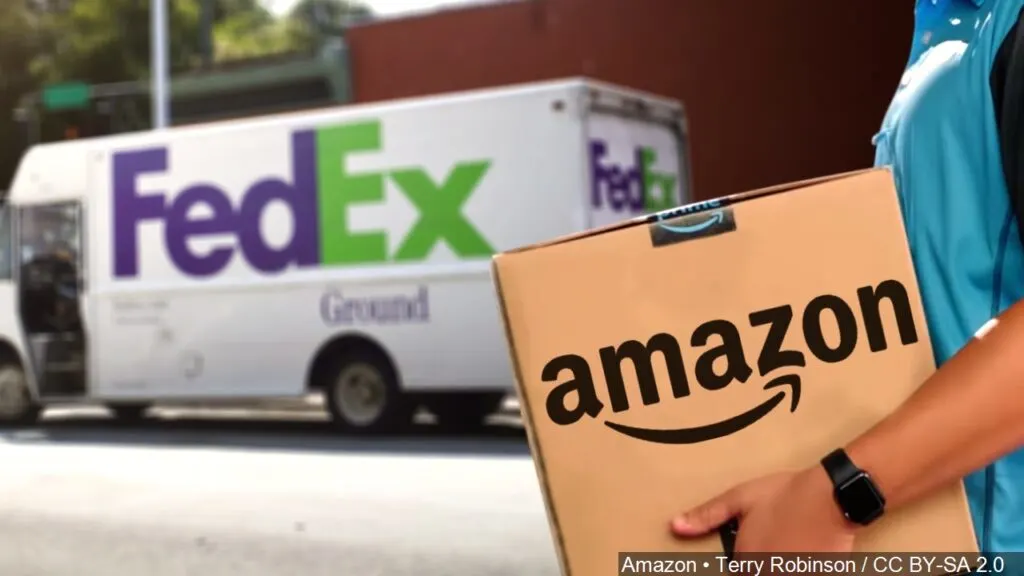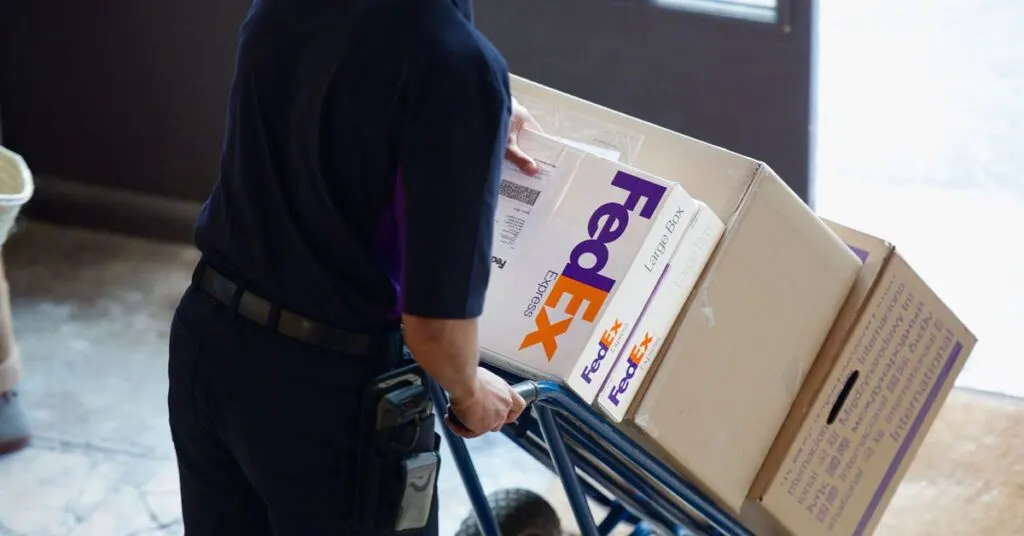
In the highly competitive world of e-commerce and logistics, sustainability has become a crucial issue for major players like Amazon and FedEx. While both companies strive to reduce their environmental impact, they have different approaches and metrics. In this article, we will explore the sustainability efforts of Amazon and FedEx, highlighting their goals, strategies, and recognition. Additionally, we will delve into FedEx’s new e-commerce platform, FDX, and its potential to transform the industry.
Sustainability has been an important issue for both Amazon and FedEx, as they are major players in the e-commerce and logistics industry. However, there are some differences in how they approach and measure their environmental impact.
According to its 2020 sustainability report, FedEx has set a goal to achieve carbon-neutral operations globally by 2040. To do so, it plans to invest in electric vehicles, sustainable fuels, renewable energy, and carbon sequestration project. FedEx also reports its carbon emissions data and predictive modeling through its FedEx Sustainability Insights tool, which helps businesses measure and reduce their environmental impact.
According to its 2020 climate pledge, Amazon has committed to reaching net-zero carbon emissions by 2040. To do so, it plans to use 100% renewable energy by 2025, purchase 100,000 electric delivery vehicles, and invest in nature-based solutions and innovations. Amazon also reports its carbon footprint and progress on its sustainability website, which shows that its carbon intensity per dollar of revenue decreased by 16% from 2019 to 2020.
Both Amazon and FedEx have been recognized for their sustainability efforts by various organizations and rankings. For example, FedEx ranked 12th on Barron’s list of the 100 most sustainable companies in America in 2020, while Amazon ranked 68th on the same list in 2021. However, both companies also face challenges and criticisms for their environmental impact, such as the emissions from their transportation networks, the waste from their packaging, and the working conditions of their employees and contractors.
In summary, Amazon and FedEx have similar goals and timelines for achieving carbon neutrality, but they differ in their strategies and metrics for sustainability. Both companies have made some progress and received some recognition for their sustainability efforts, but they also have room for improvement and accountability for their environmental impact.
How FedEx is fighting back against Amazon with its new e-commerce platform

FedEx, the global leader in express delivery, is launching a new platform that aims to give online businesses a competitive edge in the e-commerce market. The platform, called FDX, will offer a range of digital solutions that will help businesses optimize their supply chain, sell more effectively, and deliver a better customer experience.
What is FDX and how does it work?
FDX is a data-driven commerce platform that connects the entire customer journey, from point of demand to delivery and returns. It is designed to help businesses of all sizes, from small startups to large enterprises, grow their online sales by offering them access to FedEx’s extensive network, data, and insights.
FDX will combine existing FedEx commerce tools, such as ShopRunner, an e-commerce marketplace that provides fast, free shipping and other benefits to consumers, with new features that will debut in the fall of 2024. Some of the new features include:
- Estimated delivery dates and time windows throughout the shopping experience, to increase transparency and conversion.
- Real-time shipment visibility and risk management through FedEx Surround, a service that uses advanced analytics to monitor and optimize the delivery process.
- Detailed carbon emissions data and predictive modeling through FedEx Sustainability Insights, a tool that helps businesses measure and reduce their environmental impact.
- Streamlined and configurable returns process, to make it easier for customers to return or exchange products.
- Integration of FedEx network insights into order management systems, to help businesses choose the optimal shipping routes and speeds for their orders.
- Custom post-purchase experience, to match the brand standards and provide accurate shipment information to customers.
FDX will also allow businesses to leverage FedEx’s physical transportation network, which moves 15 million packages per day across 220 countries and territories. This will enable businesses to reach new markets, offer faster and more reliable delivery, and reduce their shipping costs.
Why is FDX important for FedEx and its customers?
FDX is part of FedEx’s transformation into a digitally-led business, powered by its physical network. FedEx hopes to leverage its scale and experience in moving goods around the world to enhance its relationships with merchants and consumers.
FDX is also a strategic move by FedEx to compete with Amazon, which has been expanding its own logistics operation and delivering more packages than FedEx or UPS in the US. Amazon has been seen as a threat to FedEx’s business for years, as it has been building its own delivery network, using its own planes, trucks, and drivers, and offering its own shipping services, such as Amazon Prime and Amazon Logistics.
FedEx has been distancing itself from Amazon since 2019, when it declined to renew a contract to fly Amazon cargo and stopped delivering Amazon packages for Prime members. FedEx aims to differentiate itself from Amazon by offering more digital capabilities and insights to businesses, while letting them control their customer experience. FedEx also wants to position itself as a more sustainable and ethical alternative to Amazon, by providing more transparency and accountability on its environmental and social impact.
When will FDX be available and how can businesses sign up?
FDX will be launched in the fall of 2024, and will be available to businesses in the US and select international markets. Businesses can sign up for FDX by visiting the FedEx website and filling out a form. FedEx will then contact them to provide more information and guidance on how to use the platform.
Key Takeaways:
1. FedEx aims to achieve carbon-neutral operations globally by 2040, investing in electric vehicles, sustainable fuels, renewable energy, and carbon sequestration projects.
2. Amazon has committed to reaching net-zero carbon emissions by 2040, utilizing 100% renewable energy, purchasing electric delivery vehicles, and investing in nature-based solutions and innovations.
3. Both FedEx and Amazon report their carbon emissions and progress on sustainability through respective tools and websites.
4. FedEx’s FDX is a data-driven commerce platform that connects the entire customer journey, offering businesses access to FedEx’s network, data, and insights to optimize their supply chain, improve sales, and enhance the customer experience.
5. FDX features include estimated delivery dates, real-time shipment visibility, carbon emissions data, streamlined returns, integration of FedEx network insights, and custom post-purchase experiences.
6. FDX enables businesses to leverage FedEx’s global transportation network, expanding their reach, improving delivery speed, and reducing shipping costs.
Conclusively, FDX could also help FedEx maintain its leadership position in the express delivery market, and challenge Amazon’s dominance in the e-commerce space. FDX could differentiate FedEx from Amazon by offering more digital capabilities and insights to businesses, while letting them control their customer experience. FDX could also position FedEx as a more sustainable and ethical alternative to Amazon, by providing more transparency and accountability on its environmental and social impact.
By challenging Amazon’s dominance and offering a differentiated approach, FedEx aims to position itself as a sustainable and ethical alternative. The impact of FDX on global e-commerce is expected to be significant, enabling businesses to reach new markets, increase conversion rates, and enhance their brand image. To stay ahead in the evolving e-commerce landscape, businesses should consider signing up for FDX and harness the power of FedEx’s cutting-edge platform.

